Condition states
Depending on its management history, land that once supported brigalow may now support the same vegetation, fewer or no trees, a different vegetation type, or no trees at all. These are different condition states for brigalow.
The ecological model shown on this page describes the different condition states for brigalow, and what led to their formation. It also shows how a state can be restored back to the ‘mature brigalow’ state (state 1), which is the maximum carbon state.
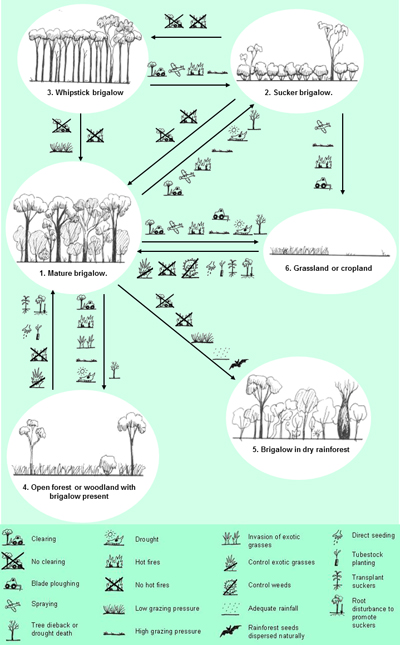
An ecological model for brigalow in Queensland. View a larger image
The main points are:
- Disturbance of mature brigalow (state 1) and invasion of exotic grasses can create a grassy open forest or woodland (state 4), reducing carbon stocks.
- Major damage to mature brigalow (state 1) causes suckering that produces ‘sucker brigalow’ (state 2), which may develop into ‘whipstick brigalow ’ (state 3) if further disturbance is minimal but carbon stocks may recover slowly.
- Clearing and blade ploughing of mature brigalow (state 1) reduces carbon stocks and wildlife habitat, and results in grassland or cropland with few native woody plants (state 6).
- Invasion of native rainforest species can cause the transition of mature brigalow (state 1) into dry rainforest (e.g. vine thicket) (state 5).
- Mature brigalow can be restored if the damaging processes stop, and their effects are counteracted where possible by managing fire and grazing, controlling weeds, promoting brigalow suckering if necessary, and in some cases reintroducing native woody plants.
- Carbon stocks in mature brigalow vegetation (state 1) will be maintained close to their capacity if there is adequate rainfall, no clearing and/or fires.
- Grazing should be compatible with carbon farming as long as enough young plants are allowed to grow to replace mature trees that die. Grazing can be useful to control grass fuels and reduce fire risk.
Identify your site’s condition state
Use these descriptions to find out the condition state of your site.
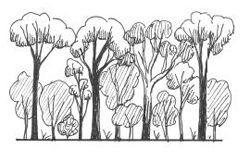
State 1—Mature brigalow
Brigalow is present as canopy trees (> 2m high) forming open forest or closed forest. Other canopy trees such as belah, eucalypts and other acacias may also be present. Understorey shrubs and sparse ground layer present. Exotic species in very low densities or absent.
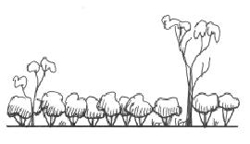
State 2—Sucker brigalow
Brigalow are present mostly as suckers (multi-stemmed shrubs < 4m high). Emergent trees may be present. Ground layer is sparse.
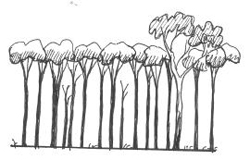
State 3—Whipstick brigalow
Brigalow trees (> 2m high) form a dense uniform layer, with or without emergent trees. There are few understorey shrubs and the ground layer is sparse.
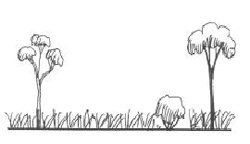
State 4—Open forest or woodland
Brigalow is present as suckers or trees, forming an open forest or woodland. Other tree and shrub species may be present.
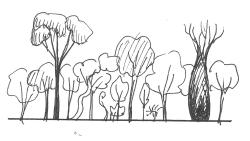
State 5—Brigalow in dry rainforest
Brigalow is present as mature trees and dry rainforest species are present in the understorey and canopy. Ground layer is sparse.
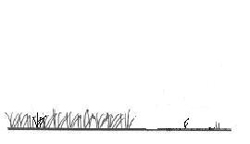
State 5—Brigalow in dry rainforest
Brigalow is present as mature trees and dry rainforest species are present in the understorey and canopy. Ground layer is sparse.


